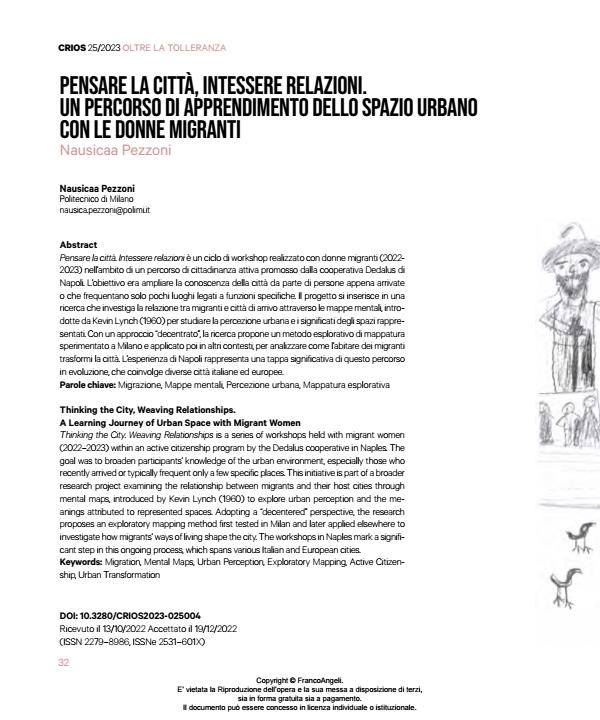Thinking the City, Weaving Relationships. A Learning Journey of Urban Space with Migrant Women
Journal title CRIOS
Author/s Nausicaa Pezzoni
Publishing Year 2025 Issue 2023/25
Language Italian Pages 16 P. 32-47 File size 307 KB
DOI 10.3280/CRIOS2023-025004
DOI is like a bar code for intellectual property: to have more infomation
click here
Below, you can see the article first page
If you want to buy this article in PDF format, you can do it, following the instructions to buy download credits

FrancoAngeli is member of Publishers International Linking Association, Inc (PILA), a not-for-profit association which run the CrossRef service enabling links to and from online scholarly content.
Thinking the City. Weaving Relationships is a series of workshops held with migrant women (2022–2023) within an active citizenship program by the Dedalus cooperative in Naples. The goal was to broaden participants’ knowledge of the urban environment, especially those who recently arrived or typically frequent only a few specific places. This initiative is part of a broader research project examining the relationship between migrants and their host cities through mental maps, introduced by Kevin Lynch (1960) to explore urban perception and the meanings attributed to represented spaces. Adopting a “decentered” perspective, the research proposes an exploratory mapping method first tested in Milan and later applied elsewhere to investigate how migrants’ ways of living shape the city. The workshops in Naples mark a significant step in this ongoing process, which spans various Italian and European cities.
Keywords: Migration, Mental Maps, Urban Perception, Exploratory Mapping, Active Citizenship, Urban Transformation
Nausicaa Pezzoni, Pensare la città, Intessere relazioni. Un percorso di apprendimento dello spazio urbano con le donne migranti in "CRIOS" 25/2023, pp 32-47, DOI: 10.3280/CRIOS2023-025004